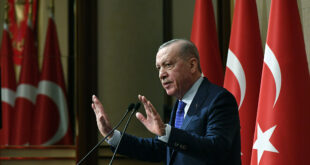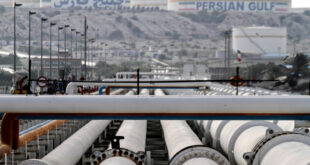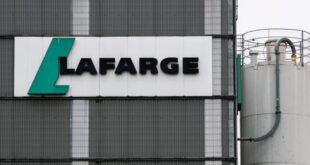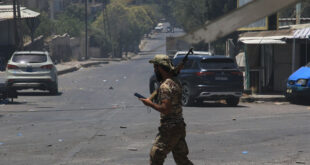The moderates continue to be sidelined in Iran in the wake of the failure of their outreach to the West as conservatives have consolidated power amid an ongoing generational change in Iran’s political leadership. The exclusion of reformists and an insignificant presence of moderates in the new Assembly of Experts leaves no doubt that Ayatollah Khamenei’s successor will be a conservative figure.
On 1 March 2024, elections were held in Iran for the 290-seat Islamic Consultative Assembly and the 88-member Assembly of Experts that elects the Supreme Leader and oversees his performance. According to figures released by Iran’s Interior Ministry, over 25 million people cast their votes with a 41 per cent turnout rate.1 The election process and the outcome were in keeping with the trend since the last parliamentary election in 2020 when the moderates were sidelined in the wake of the failure of their outreach to the West as conservatives consolidated power amid an ongoing generational change in Iran’s political leadership.
Given the marginal participation of reformists and moderates, the parliamentary elections were primarily a competition among the conservative factions. However, the surprising outcome was the better performance of the candidates and newcomers belonging to the hardliner Front of Islamic Revolution Stability (known by its Persian acronym Paydari), in comparison to the traditional conservatives led by current parliament speaker Bagher Ghalibaf, who is a three-time presidential candidate, former mayor of Tehran and also a former commander of the Islamic Revolutionary Guard Corps (IRGC) Aerospace Force.
The Process
The 290 members of the Majlis represent Iran’s 207 electoral districts. Tehran with 30 seats is the largest multi-seat district and East Azerbaijan with six seats is the second largest. For multi-party districts, informal factions make lists of candidates to be elected, and seats are distributed to candidates in proportion to the number of votes received.2 Successful candidates are also required to get a minimum of 20 per cent of votes cast. As a result, several representatives in Tehran district are elected through runoff elections which will be held in coming months.
The Elections Supervisory Board headed by the deputy interior minister for political affairs does the initial vetting for the candidates who register for elections. Subsequently, the candidates are vetted by the 12-member Guardian Council, comprising six Islamic jurists selected by the Supreme Leader, and six jurists elected by the parliament from a pool of candidates nominated by the Chief Justice, who, in turn, is also appointed by the Supreme Leader.
The criteria on which the Guardian Council must base its decision to qualify or disqualify candidates are listed in Article 28 of the Elections Act of Islamic Consultative Assembly. However, in recent years, several prominent disqualified candidates have alleged political bias and demanded explanations for the Council’s decisions. The Assembly of Experts comprises 88 mujtahids or experts of Islamic jurisprudence, who are elected by direct public vote for eight-year terms from 31 electoral districts or administrative provinces in the country.3 To reduce costs and to increase voter participation, the last election for the assembly was postponed by one year and held together with the 2016 parliament elections.
Hardliners on the Rise
In Iran’s hybrid political system, the Supreme Leader leads the parallel state institutions including the Guardian Council and the judiciary, which play a vital role in preserving Iran’s Islamic system against challenges emerging from Iran’s republican institutions including the office of the president and the national parliament.4 Traditionally, during periods of confrontation with the United States and a deteriorating regional security environment, hardliners, many of them former commanders of the Islamic Revolutionary Guards, are able to claim political power as the guardians of the security of the nation. Further, as many of the leaders and movements who have dominated Iran’s politics for the last three decades are passing from the scene, the parallel state has seized the opportunity to create a cohesive political system populated by a younger generation of conservatives.
Given that the elections followed sustained nation-wide anti-regime protests triggered in September 2022 following the death of Mahsa Amini who was detained for ‘improper hijab’, the issue of popular participation dominated the election agenda. Traditionally, it is the reformists and moderates who have used polarising issues such as civil rights, as in the case of Mohammad Khatami, economy and improvement of relations with the United States in the case of Hassan Rouhani, to ride popular participation to victory.
As reformists and moderates are crowded out of the political system, the conservatives fall back on nationalist rhetoric to appeal for voter participation. Ayatollah Khamenei in a major speech in January stated that participation in elections is both a duty and people’s right.5 In another speech on 18 February, Khamenei stated that
‘elections are a manifestation of the republican system and this is why the Arrogant Powers and the US, who are opposed to both republicanism and the Islamic nature of the Islamic Republic, are against the elections and the enthusiastic participation of the people’.6The trend of the Guardian Council disqualifying prominent reformist and moderate candidates, which started with the 2020 parliamentary elections, continued. Among the 26 sitting members of the parliament disqualified by the Guardian Council, several belong to traditional conservative camps who served in prominent positions under Rouhani. Gholamreza Nouri Ghezeljeh, a moderate-conservative from Bostanabad in East Azerbaijan who served as deputy speaker when Ali Larijani was the parliament speaker, was disqualified. He had made headlines last year when he claimed that Iran’s annual inflation rate was 120 per cent, much higher than figures reported by other government officials. “Downplaying economic problems will add to people’s distrust of the government,” he had said.7
Masoud Pezeshkian, who succeeded Ghezeljeh as deputy speaker, was also disqualified. Ahmad Alireza Beigi, who represented East Azerbaijan for two terms and was governor of the province under former President Mahmoud Ahmadinejad, was also disqualified. In 2023, he had alleged that the Minister of Industry, Mines, and Trade, Reza Fatemi Amin, had bribed several parliamentarians with SUVs so that they would withdraw their votes for his impeachment.8 Evidently, in addition to the traditional conservatives who had aligned with the Rouhani administration, candidates linked to Ahmadinejad, who had fallen out of favour with the Supreme Leader and the principlist camp during his second term, have been kept out of the race.
In January, while explaining the reformists’ decision not to field any candidate for parliament, Mahmoud Mirlohi, a member of the Reformists’ Supreme Council for Policymaking, said the young generation in Iran that finds itself at odds with the ruling principlists, does not view the reformists as the solution to the myriad of problems in the country either.9 Ali Motahari, who has represented Tehran from 2008 to 2020, led the reformist Voice of Iranians list in Tehran. While a Social Conservative on the key issue of hijab, he had contested the 2016 election as part of Rouhani’s Hope list and supported a nuclear deal with the West.10
Motahari has come to be regarded as a conservative-reformist after he repeatedly criticised Supreme Leader Khamenei’s decree on the house arrest of Green Movement leaders, former Prime Minister Mir Hossein Mousavi and former parliament speaker Mehdi Karroubi as contravening the constitution. His prominent lineage as a son of Ayatollah Morteza Motahhari, a close associate of Ayatollah Khomeini and a prominent ideologue who popularised the political theory of Shi’ism and religious leadership among Iranian youth in the years leading to the Islamic Revolution, has shielded him to some extent. He was physically attacked in 2015 by hardline elements.11 However, his list failed to gain any seats because of the low turnout among pro-reformist voters and the relative obscurity of its candidates.12
In Tehran, where in the past clerics have seldom emerged as top vote-getters, hardline clerics, Mahmoud Nabavian and Hamid Rasaee clinched first and third places respectively, and Amirhossein Sabeti, a young hardliner activist and a former political show anchor, came in second place.13 All three are linked to Paydari, but there were three separate hardline lists. Rasaee led his own list called Amana, Manouchehr Mottaki, the former foreign minister under Ahmadinejad headed the United Front list and controversial social media propagandist Prof. Ali Akbar Raefipour, who has a base of young followers, led ‘Dawn of Iran’ list, with Saeed Mohammad as a prominent figure.
Mohammad belongs to the younger generation of IRGC commanders. He had resigned from his position as the chief of the IRGC engineering arm and business conglomerate Khatam Al-Anbiya Construction Headquarters to run for the 2021 presidential elections.14 He had backed Raisi after his own candidacy was disqualified. His alliance with Raefipour came in the wake of his removal from the position of Secretary of the Supreme Council of Free and Special Economic Zones only a year after he was appointed by Raisi.
Bagher Ghalibaf led the traditional conservative SHANA (Persian acronym for Council for the Coalition of Revolutionary Forces). Ghalibaf, who had secured the highest votes in Tehran in 2020, lost two-thirds of his votes falling to fourth place. Out of the 14 candidates who secured seats in Tehran, only seven belong to SHANA. The remaining 14 representatives will have to be elected in the runoff.15 The reformist daily Sharq, analysing the election outcome, noted that “‘while all media affiliated with official institutions were behind the SHANA list, organised online networks were in the hands of SHANA’s rivals. This network was essentially formed around the discourse of ‘anti-Qalibaf’”.16
Notably, in both 2020 and the latest elections, Paydari and SHANA lists had common names. For instance, Nabavian, who received the highest votes in Tehran, was on several lists. But in the current elections, Paydari has emerged as the most powerful group within the principlists. As its leaders stake claim for the position of parliament speaker, putting pressure on Ghalibaf, Supreme Leader Khamenei has warned conservatives against infighting and divisions in the new parliament.17 Paydari has been fiercely critical of the reformist cause of social and cultural freedoms and diplomacy with the West and denounces them as ‘seditionists’ and ‘deviant’. With a combination of hardline clerics and ex-IRGC leaders, it has a securitised approach to both governance and Iran’s foreign policy.18
Assembly of Experts: Moderates and Reformists Excluded
The elections for the sixth Assembly of Experts were especially important given that the newly elected body during its eight-year term will be responsible for electing a successor to the current octogenarian Supreme Leader Ayatollah Khamenei. Of the 510 clerics who registered for 88 seats, only 144 (28 per cent) were deemed qualified. Former president Rouhani and Mahmoud Alavi, who served as his intelligence minister were among the prominent incumbents who were barred from running. Rouhani in a written statement noted that his disqualification is at odds with the demand of the leader of Iran’s Islamic Revolution for all efforts to pave the way for a huge turnout in the vote and added that the move confirms that what the “ruling minority” wants is a low popular turnout so that they will determine people’s future with their own decisions.19
Ayatollah Sadegh Amoli Larijani, former two-term judiciary chief and the head of the Expediency Council, lost his seat in the assembly after ranking fifth in the vote for four seats in Mazandaran. Analysts note that during his term in the judiciary, his severe crackdown on Supreme Leaders’ critique had created severe backlash from rival conservatives from the Ahmadinejad camp.20 In 2021, after his brother Ali Larijani was disqualified from the 2021 presidential elections, Sadegh Larijani had alleged interference by security organisations in the decision-making process and said that he has “never found its decisions so indefensible”. Amoli Larijani’s defeat underscores the diminished influence of Larijani family during the crucial transition period in country’s politics. President Raisi garnered 82 per cent votes in South Khorasan, where all rivals except one were disqualified by the Council.21
Conclusion
The recent elections underscore that the Islamic Republic of Iran increasingly resembles other ‘managed democracies’ such as Russia, where electoral institutions no longer yield to a meaningful contestation for power. A section of the elite through its control over elections is able to perpetuate and legitimise its hold on political power. The most significant outcome of the parliament elections is the rise of a younger generation of hardliners, whose ambitions and combative politics seems to belie the hopes that conservative consolidation will translate into political unity. The exclusion of reformists and an insignificant presence of moderates in the new Assembly of Experts leaves no doubt that Ayatollah Khamenei’s successor will be a conservative figure.
Source: This article was published by Manohar Parrrikar IDSA
1.“Interior Ministry Discloses 41% Voter Turnout in March 1 Elections”, Tehran Times, 4 March 2024.
2.Mehrzad Boroujerdi, “Iran’s Faustian 2024 Elections: Statistics Tell the Story”, Stimson, 4 March 2024.
3.Farideh Farhi, “The Assembly of Experts”, The Iran Primer, 13 June 2011.
4.Mohammad Ayatollahi Tabaar, “Iran’s War Within Ebrahim Raisi and the Triumph of the Hard-Liners”, Foreign Affairs, 5 August 2021.
5.“Iranian Politician: Reformists Won’t Ban Elections, Not to Field Candidates Either”, Iran Front Page, 26 January 2024.
6.“Elections are Main Pillar of the Islamic Republic & In It People are the Owners of the Country”, Nournews, 18 February 2024.
7.“News Digest: Week of July 3”, The Iran Primer, 10 July 2023.
8.“Iranian MP: 300 SUVs Given to Lawmakers in ‘Criminal, Fraudulent’ Move”, Iran Front Page, 23 August 2023.
9.“Iranian Politician: Reformists Won’t Ban Elections, Not to Field Candidates Either”, no. 5.
10.Farzan Sabet, “Iran’s 2016 Elections: Change or Continuity?”, Carnegie Endowment For International Peace, 9 June 2016.
11.Emad Askarieh, “Attack on MP Motahari Outrageous: Rafsanjani”, Iran Front Page, 15 March 2015.
12.Sina Toossi, “Iran’s New Wave of Political Conservatives Is Here”, Foreign Policy, 7 March 2024.
13.Mehrzad Boroujerdi, “Iran’s Faustian 2024 Elections: Statistics Tell the Story”, Stimson, 4 March 2024.
14.Arash Azizi, “March 1 is the Upcoming Iranian Elections. The Terrain Looks More Divided Than Ever”, Atlantic Council, 28 February 2024.
15.Mehrzad Boroujerdi, “Iran’s Faustian 2024 Elections: Statistics Tell the Story”, Stimson, 4 March 2024.
16.Sina Toossi, “Iran’s New Wave of Political Conservatives Is Here”, no. 12.
17.“As Dust from Elections Settles, Iran’s Conservatives Clash Over Spoils”, Amwaj Media, 12 March 2024.
18.Ellie Geranmayeh, “Part 1: Reviving the Revolutionaries”, The Iran Primer, 14 July 2020.
19.“Iran’s Former President Rouhani Slams His Disqualification from Elections”, Iran Front Page, 25 January 2024.
20.“In Irony, Ahmedinezhad Calls For Free Elections in Iran”, Informed Comment, 22 February 2018.
21.“Raisi Wins Expert Assembly Election as Rivals Removed from Ballot: Iranian Press Review”, Middle East Eye, 5 February 2024. Eurasia Press & News
Eurasia Press & News




